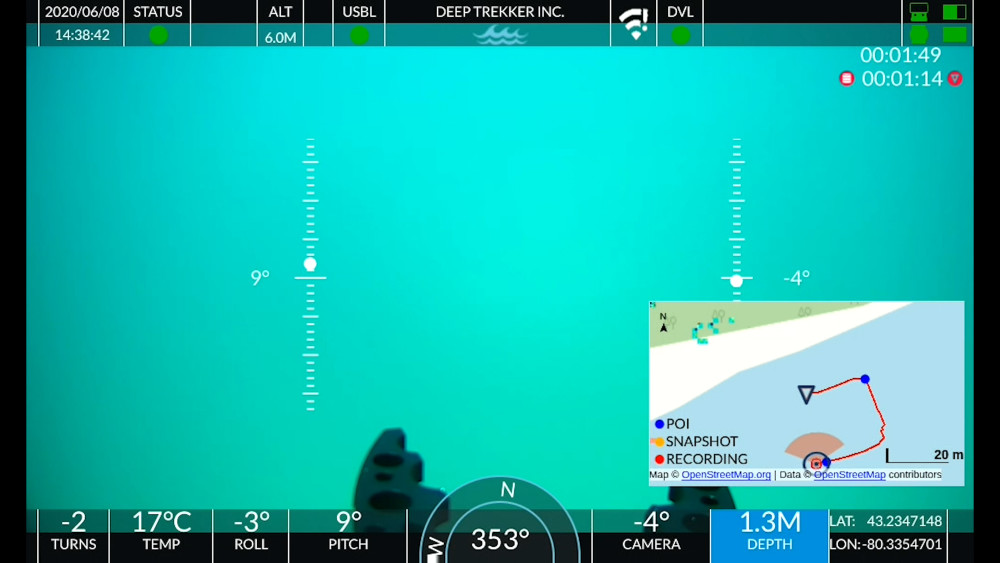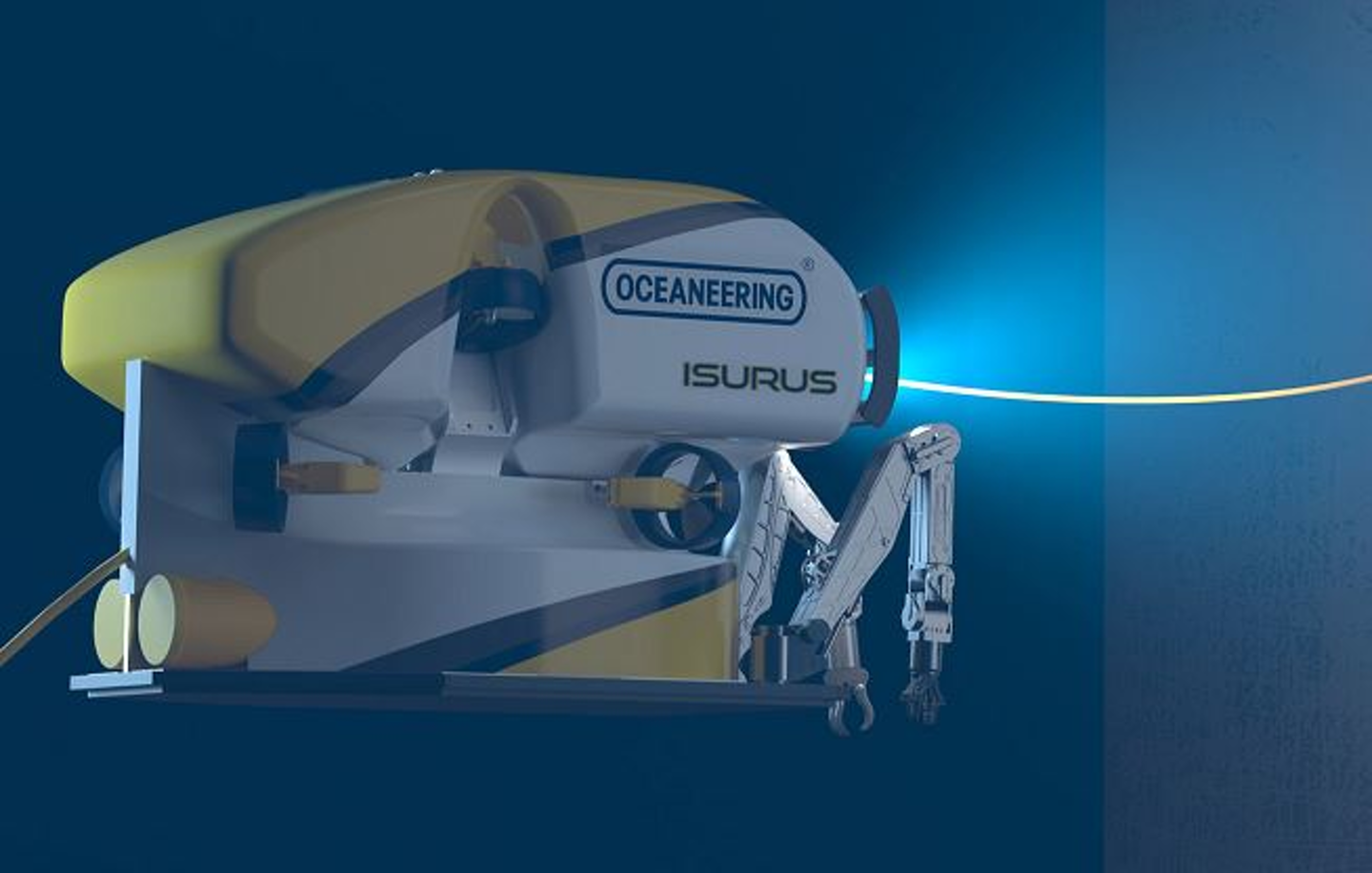Home › Forums › ROV › Self/Home Build ROV Discussions › Need help on specs. for 10 Ibs of thrust
- This topic has 3 replies, 1 voice, and was last updated 17 years, 8 months ago by
Gina McLauchlan.
-
AuthorPosts
-
September 18, 2006 at 10:06 am #160
Gina McLauchlan
ParticipantThis is one carried over from the old forum
Hey all,
I have calculated that I need to 10 Ibs. of thrust to meet my requirements for a project I’m working on. I have limited experience on how to make this happen. Right now I know/think I need a brushless DC motor running 12VDC at low RPMs spinning a ~0.5M propeller with 2-3 blades. I think I need a 1/4HP motor to spin this prop, but I’m not sure.
Do any of you techies have a mathatical way to determine the thrust from a propeller at a certain RPM and torque/HP?
September 18, 2006 at 10:07 am #7913Gina McLauchlan
ParticipantThis is one carried over from the old forum
Wolfie
Sorry I don’t know how to calculate, but there are other variables involved as well as rpm, such as design of prop, whether a nozzle is used etc. Thruster / prop design is quite involved I think, not sure if there is a quick and easy calculation?
You didn’t say what you need the thruster for. If it is for propulsion, there are some good off-the-shelf ones available. I’ve only ever used ready-made electric thrusters supplied with nozzles and props, for a couple of projects – I’d rather let someone else do all the design and calculations, no point in re-inventing the wheel. Check out websites:
http://www.tecnadyne.com/thrusters or http://www.seaeye.com/thrusters
(tecnadyne 250 would provide the required 10lbs thrust).
or http://www.sub-atlantic.co.uk/propulsion
(they do DC brushless and also AC motors, also sell drive electronics boards).Maybe you’re not intending to use for propulsion, as you said you want low revs and are using a large (0.5m?) prop? Use of correct nozzle makes significant difference to efficiency of a thruster.
12v DC may not be a good idea due to high current penalty. Depends what you’re doing. Hope this is of some help to you.temp
September 18, 2006 at 10:08 am #7914Gina McLauchlan
ParticipantThis is one carried over from the old forum
Wolfie,
For propellers, the main formula involving force and shaft torque is:
F = 2 pi T / p, where F is the force of drag on the hull (and therefore the thrust); pi is 3.141592…; T is the torque on the propshaft; p is the propeller pitch. (Pitch is the distance through the water the prop will move for one revolution of the shaft, and needs to be chosen to match the motor RPM to the required velocity)
The main formula involving power is:
P = 2 pi T V / p , where variables above are the same, along with P being the power, and V being velocity;
These formulae assume a 100% efficient prop. Using them will give a ball park figure for the motor power and torque required for your desired thrust and velocity, but you will need to make allowance for prop inefficiency. Efficiency varies wildly with prop/nozzle design. You need a degree in hydrodynamics to work it out on paper (and even then your answer will almost certainly be wrong!) even for commercial manufacturers prop selection tends to be a matter of experimentation.
Best bet, as Temp says, is to buy complete thrusters.
September 18, 2006 at 10:11 am #7915Gina McLauchlan
ParticipantThis is one carried over from the old forum
The easy way: 😀
http://www.airwinch.com/tools/drum.htm
Play with the numbers as much as you want here.. Metric or Imperial.The hard way 😕
Here is the Formula for calculating drum spooling capacity in feet.Before you begin you will need four dimensions.
1) The drum length (distance between the flanges) which is designated “B” on drawing below.
2) The flange depth (from the top of the flange to the drum) which is designated “A” on drawing below.
3) The drum diameter which is designated “D” on drawing below.
4) The diameter of the tether.
To determine the value of “K” – find the thether diameter from the chart below and use that value as “K” in the formula below the chart.
Dia = Value of K
1/4″ = 3.29
5/16″ = 2.21
3/8″ = 1.58
7/16″ = 1.19
1/2″ = 0.925
9/16″ = 0.741
5/8″ = 0.607
3/4″ = 0.428
7/8″ = 0.308
1″ = 0.239
1 & 1/8″ = 0.191
1 & 1/4″ = 0.152
1 & 3/8″ = 0.127
1 & 1/2″ = 0.107
1 & 5/8″ = 0.0886
1 & 3/4″ = 0.077
1 & 7/8″ = 0.0675
2″ = 0.0597
2 & 1/8″ = 0.0532
2 & 1/4″ = 0.0476
2 & 3/8″ = 0.0421
2 & 1/2″ = 0.038
2 & 5/8″ = 0.0345
2 & 3/4″ = 0.0314
2 & 7/8″ = 0.0287
3″ = 0.0264SPOOLING CAPACITY = (A” + D”) x A” x B” x K (from chart)
First, add together the flange depth (A) and the drum diameter (D). Multiply that number by the flange depth (A). Multiply that number by the drum length (B). Multiply that number by the value of the cable diameter (from chart below). The product will be the spooling capacity of the drum in feet. Note: to obtain the drum diameter in inches, measure the distance around the drum (circumference) then divide that number by 3.14
The above will tell you how much tether length (of the dimension you have) will fit on the drum you have.
If you have (say) half a drum of thether wrapped on already, and ned to knwo how much is there, use the depth from the outer layer to the drum as ‘A’
best regards
James Mc -
AuthorPosts
- You must be logged in to reply to this topic.




